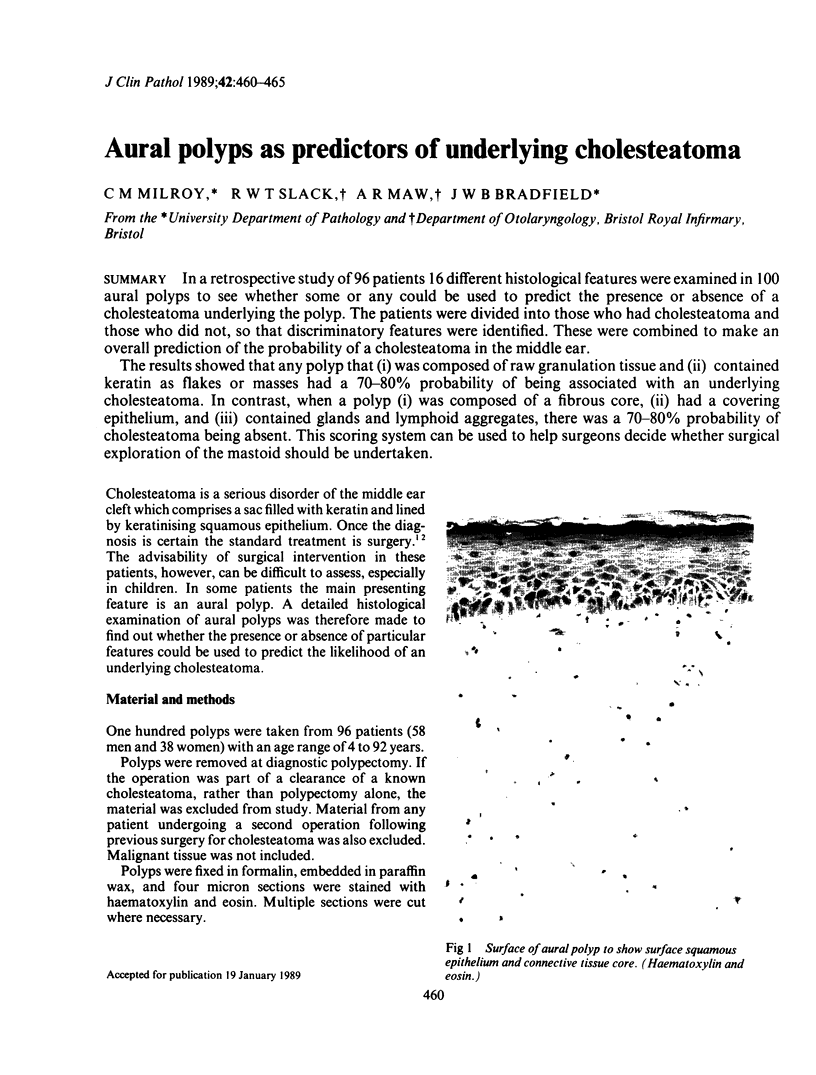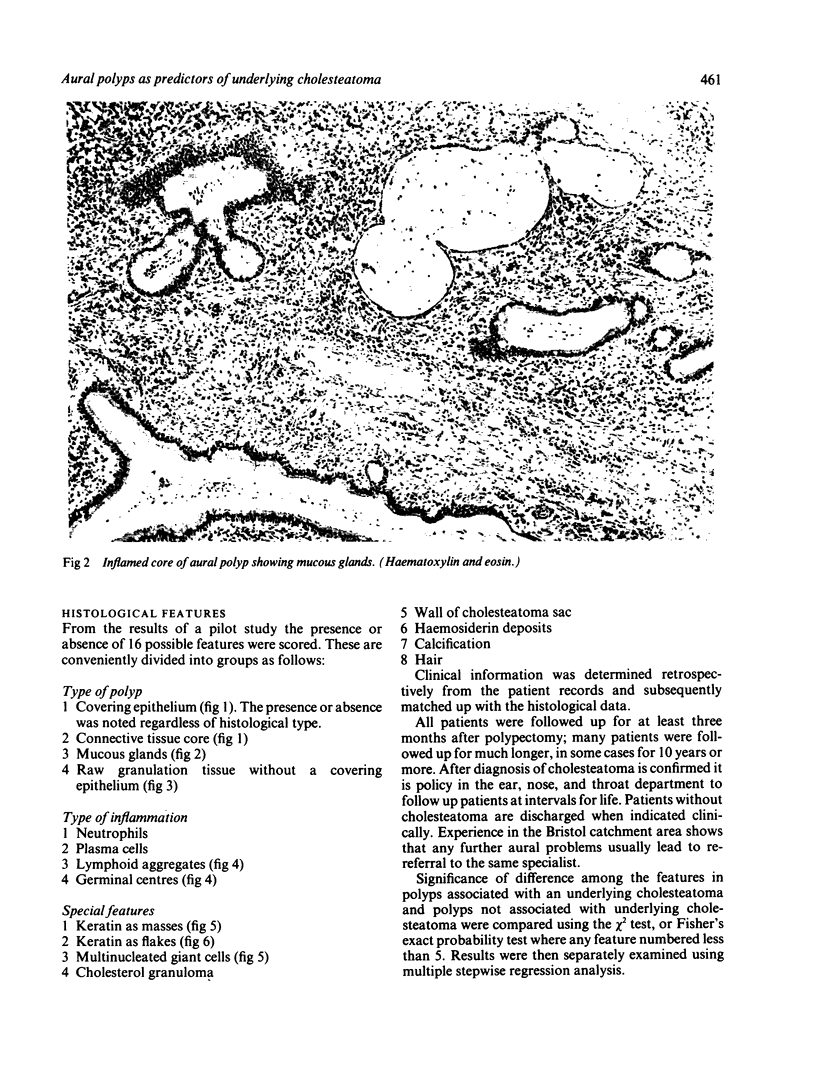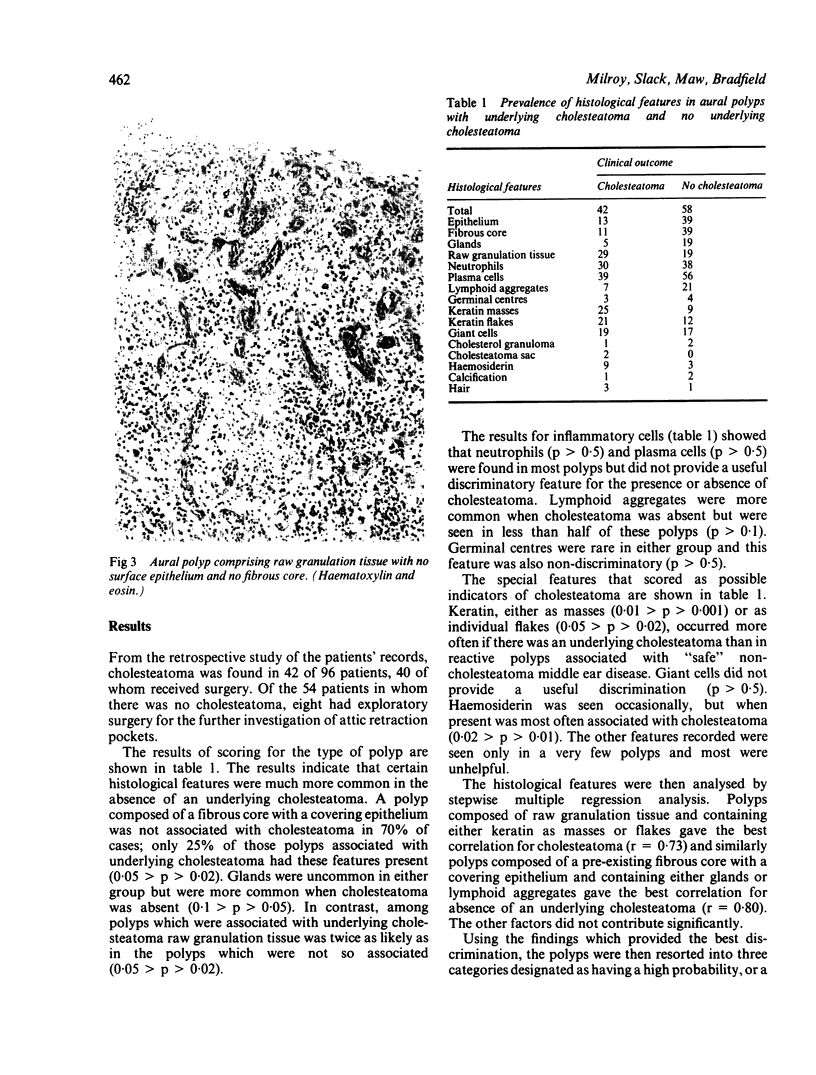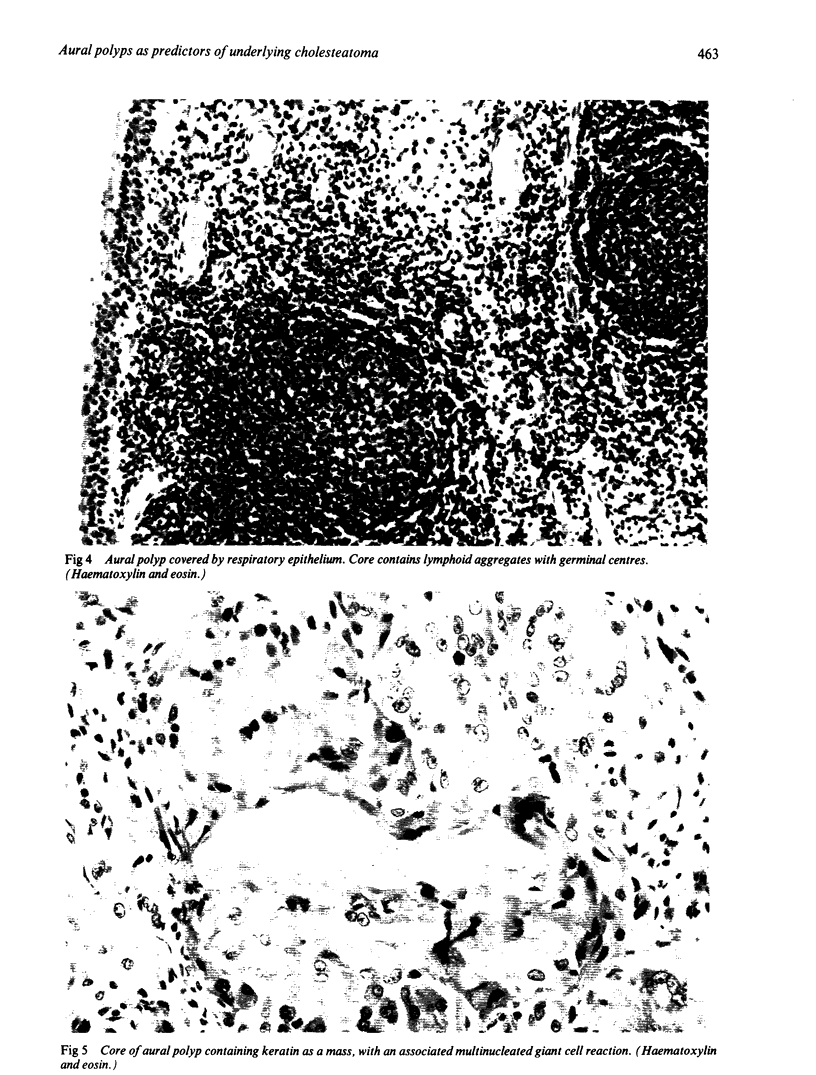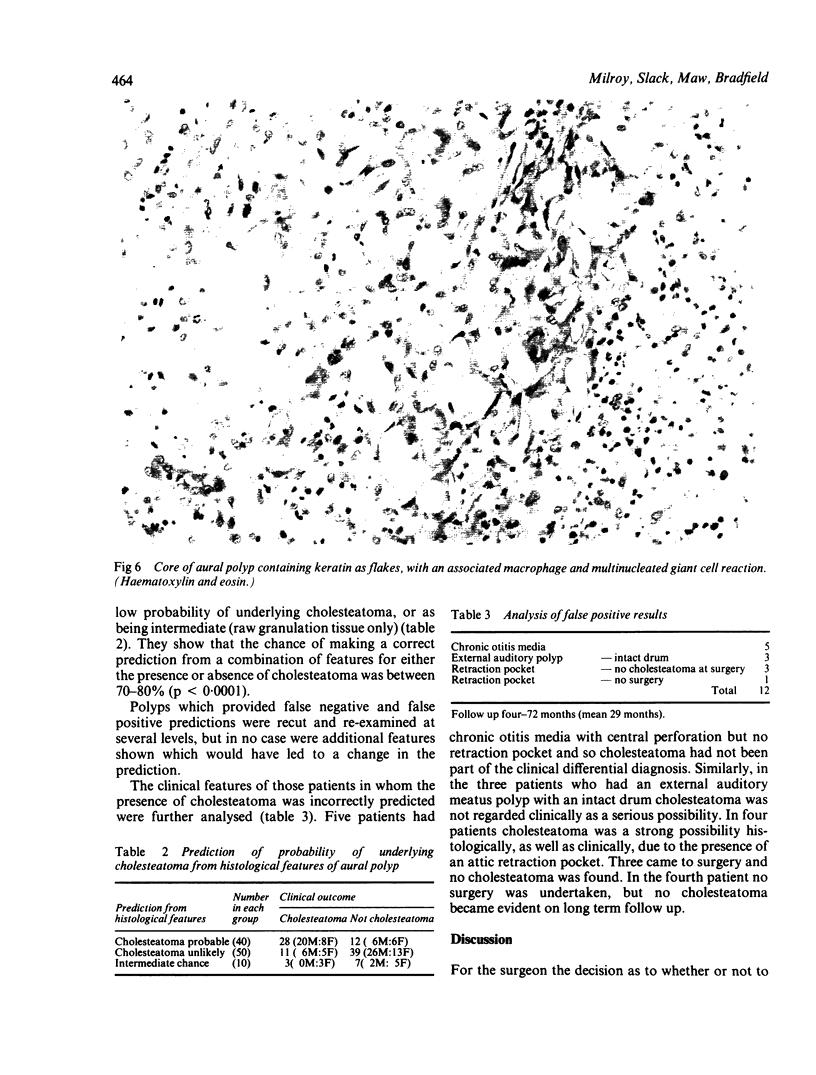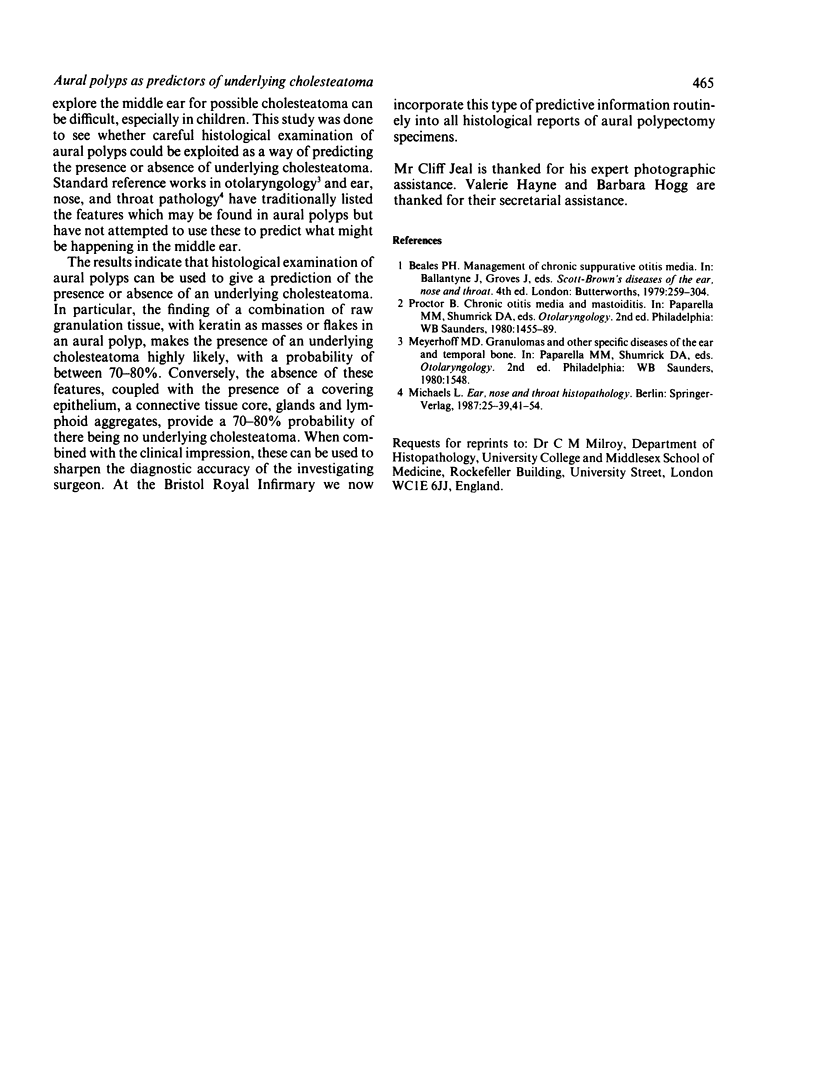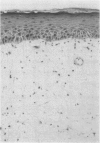Abstract
In a retrospective study of 96 patients 16 different histological features were examined in 100 aural polyps to see whether some or any could be used to predict the presence or absence of a cholesteatoma underlying the polyp. The patients were divided into those who had cholesteatoma and those who did not, so that discriminatory features were identified. These were combined to make an overall prediction of the probability of a cholesteatoma in the middle ear. The results showed that any polyp that (i) was composed of raw granulation tissue and (ii) contained keratin as flakes or masses had a 70-80% probability of being associated with an underlying cholesteatoma. In contrast, when a polyp (i) was composed of a fibrous core, (ii) had a covering epithelium, and (iii) contained glands and lymphoid aggregates, there was a 70-80% probability of cholesteatoma being absent. This scoring system can be used to help surgeons decide whether surgical exploration of the mastoid should be undertaken.
Full text
PDF